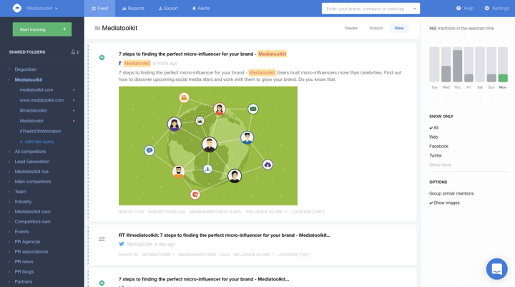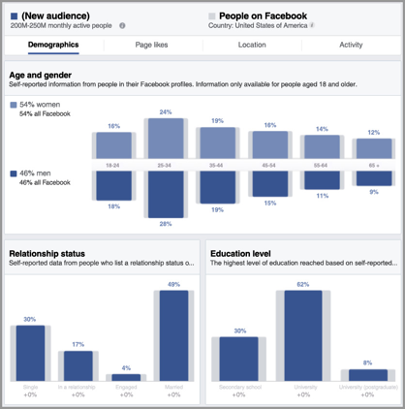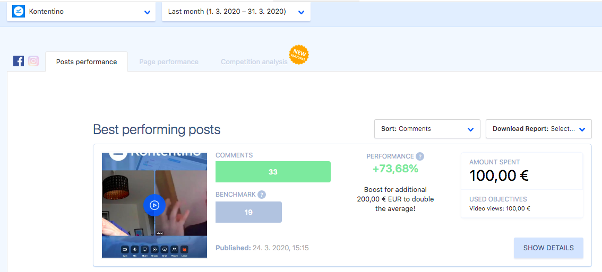14 Best Social Media Automation Tools To Leverage in 2023
We know the struggles of social media managers: juggling multiple accounts, keeping up with content creation, and never quite having enough hours in the day. 🥵 Well, we’ve got your...
The key to success for many brands on social media is to find the right target audience. You can use social media as a platform for engaging with customers and attracting new ones, but being successful at this can be a challenge if you aren’t sure who comprises your target market.
This blog post will teach you how to effectively identify your target audience so that you can spend more time interacting with them on social media.

Be sure to evaluate the current state of your social media profile and current audience before starting this exercise.
Determine the demographics of your customers such as age, gender, and location by asking what they do, where they live, and how much money they earn (it’s important that you’re discreet with the last one!) You should find out what their interests are and what topics they are most likely to talk about.
This task will be more challenging if your precise target market isn’t immediately apparent – for example, if you sell a wide variety of products. In such a scenario, try looking into the kinds of people who have already purchased from you.
Tip: If you want to get to know your ideal target group, it’s worth using ready- made analytical tools to gather all of the necessary data in one place. One of the best and most popular tools is Google Analytics because it allows you to check your social media traffic and thus identify these people.
If many different types of customers have bought something from your website or store then it’s likely that there is no one specific group that represents your core target audience but rather several different groups, each with similar needs. In this case, you should look deeper into the profiles of those customers to see if any common trends can point you in the right direction.
Social listening can help you discover what your target audience is talking about. As an example, think about luxury items (e.g. Ferraris) or the types of events your target group attends (e.g. music festivals if you’re targeting Millennials with high disposable incomes).
Similarly, if some topics appear frequently they may be good indicators to guide you on your way. For instance, if many of your potential clients are fans of a particular artist then you may consider inviting them for a collaboration.
Without social monitoring, it would take you a very long time to obtain this sort of feedback yourself if even possible at all.
Tip: There are many tools available on the market that can alert you as soon as somebody mentions your brand on the Internet. Real-time monitoring allows you to view all mentions and react quickly any time something happens.

Monitoring social media can provide you with lots of insights into your communication channels and target audience. When you target a specific group on social media, it’s crucial that you monitor what they’re discussing and what kind of messages are being shared between them. Having the right tools in place will allow you to better target your target audience with marketing campaigns.
Your social media efforts will be more successful if you understand your target group. You can increase brand awareness, build trust and loyalty, as well as drive sales by identifying and engaging with your target audience on social media.
If you don’t carry out research before you begin communicating with your potential audiences you run the risk of wasting valuable time and resources.
Your target audience on social media may use one or more specific platforms more than others. That’s why it’s important to research which platforms are popular with the type of people you’re targeting – doing so will help you determine where best to engage them online, or which channel might be worth removing from your strategy for the time being.
Spending time researching what platforms your audience likes to use most allows you to save time that would otherwise be spent on gaining followers and building up engagement levels on obsolete or irrelevant (at least to your target audience) platforms. So find out about your future customers’ likes and dislikes, as well as how active they are on certain networks (e.g. Twitter vs Facebook).
That being said, having a strong presence across all channels can increase your reach – just be careful not to invest time and effort where it’s unlikely to pay off.
Looking at your competitors on social media is one of the simplest methods of targeting an audience.
If you gain some insights into how other brands in your industry have built their followings and engaged their audiences, you will be better able to identify your own target audience and expand your base of followers.
Influencer marketing has become especially popular in recent years thanks to its high ROI (return on investment). If done correctly, these partnerships can not only increase brand awareness but also help with attracting new customers and growing your target audience on social media.
It’s possible to target influencers in different ways – some brands may want to collaborate with influencers by creating custom content, while others just want to build relationships and share one another’s posts. All of these actions add value and contribute to the key point of this article – capturing your target audience.
Tip: With tools like SocialBlade or Social Auditor, you can verify influencers from head to toe and determine whether or not they will add value to your campaigns.
On social media, it is important to reach out to an audience who will perceive your brand to be valuable. It doesn’t always have to be all about selling to them – it could be as simple as offering support, answering questions, or even providing entertainment through images and videos that they can share with their friends.
Knowing what kind of content your audience is likely to engage with will help you deliver only relevant posts, which in turn will lead to greater numbers of followers.
If you decide to target a specific group on social media, make sure somebody within your business is responsible for monitoring results regularly so that everything is tracked accurately. That way, if a campaign does not perform as expected, adjustments can be made quickly before too much damage is done.
By being aware of the purposes that different people use various platforms for, you can find out where they spend most of their time and then target specific groups on social media accordingly. Not only will this help your content be more relevant, but it will also increase engagement levels. Whether your audience shares your posts or visits your website through links posted online, this means that every action is valuable.
Armed with strong targeting skills, there are no limits to what you can achieve with successful strategies for certain target groups on social media.
One of the best ways to target your ideal audience on social media is by defining what your products or services are capable of doing for people. Many businesses focus solely on the features of their products or services without illustrating how their offerings can help and, more importantly, benefit their target audience.
By pinpointing why someone should buy from you rather than a competitor, you create more demand for your brand. This, in turn, will boost sales, encourage repeat business, and ensure that your target audience on social media keeps coming back for more!
Once you have identified your target audience, the next step is to find the ways in which you can best reach out to them. How can this be done most effectively?
You can target an audience on social media with Facebook’s Lookalike Audiences (or Custom Audiences for Instagram). These are people who have similar interests to your best customers, meaning their lookalikes are more likely to purchase from your company as well.
A good use of this approach is to target people based on their interests and behavior rather than just their page likes, for example.
Ad targeting works similarly. If someone has visited a website but hasn’t purchased anything yet, this type of application makes it possible to target them again at a later date without needing to do any extra work.

Tip: You can use Facebook Ads Manager to identify people who may potentially fit into your ideal target market. This can be any demographic – a particular age bracket, gender, or even specific location. You can then target that specific audience immediately on social media.
It’s easy to think that simply searching for a target audience on social media will automatically lead you to them. However, in order to achieve the best results, it’s important to understand how people use specific social networks.
With Instagram being heavily image-driven, posts with photos and videos are more likely to engage with target groups. Facebook, on the other hand, has an algorithm that changes visibility according to many factors such as who is looking at your page and how people interact with your brand, etc.
One of the best ways to target audiences on social media is by optimizing organic reach through testing what type of content works best for each target group. By using analytics in Kontentino, you can see which posts are getting likes, comments, and shares. You can then make small tweaks to future updates in order to maximize visibility!

In social media marketing, effective ad targeting requires both a deep understanding of what type of content target groups engage with and knowledge of how they use the platform in question.
The best way to reach your desired audience on social media is by using a combination of paid and organic posts that have been tested for effectiveness before being rolled out widely across different platforms. This ensures you get more bang for your buck (and who doesn’t like optimising their RoI?)
If you use an influencer marketing strategy, then you can successfully target all demographics through word-of-mouth recommendations instead of relying solely on paid advertising. These groups often already know who they want to see in their feeds, so you won’t need to target them as aggressively.
It’s all down to A/B testing to identify what’s performing better. Without tests, you are performing nothing more than guesswork.
Don’t be afraid to try new things with your target market – it’s always possible that something will work better than expected. There’s nothing worse than giving up – remember that there are many different target audiences out there – something that didn’t work for one group may work for another.
Try new things, but remember that it’s always worth revisiting your research into the makeup of your target group on social media so that you don’t waste time and resources trying something that is unlikely to work now even if it once did.
It’s very likely that you’ll have to continuously conduct research into your target audience, since it has the possibility to change over time.
There are many different types of content that can be used across various social platforms, so it’s important not only what kinds of posts work best on each channel but also which formats resonate most with your target audience.
Ultimately, If your content is engaging enough then you will be successful in reaching out to your target audience. Try to distinguish between the five different stages of the purchasing funnel, which means creating content as follows:
Doing this means that your content will be diversified, allowing you to build trust and create an authentic base of engaged fans.
Capturing your target audience on social media isn’t necessarily complicated once you know how to do it properly. Identify your target audience first and then try to find ways to reach out to them.
Once you understand how to connect with your target audience, you can create an effective marketing strategy to do so, and use it repeatedly to great effect.